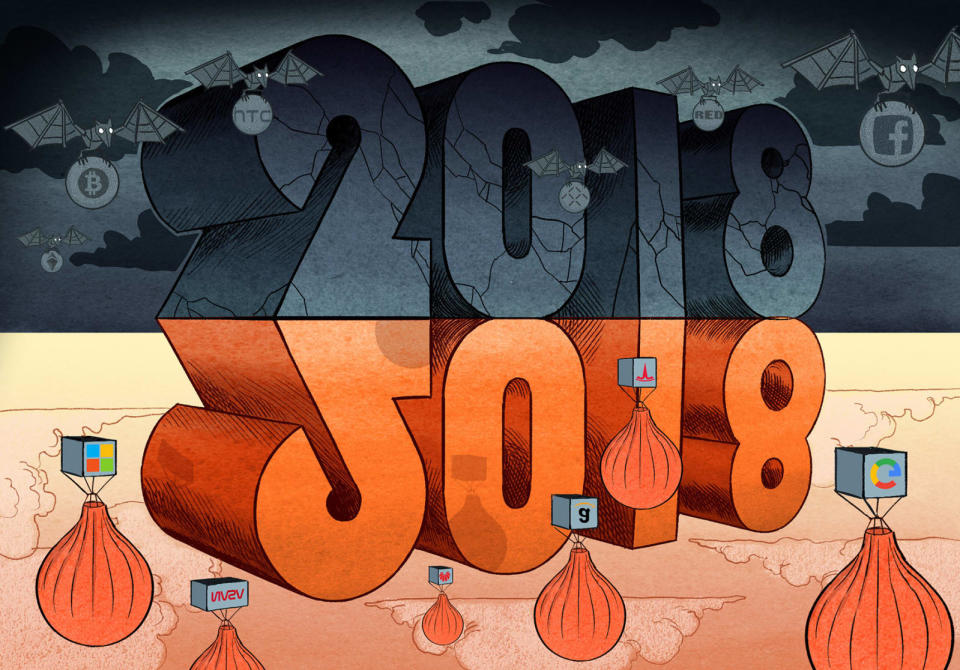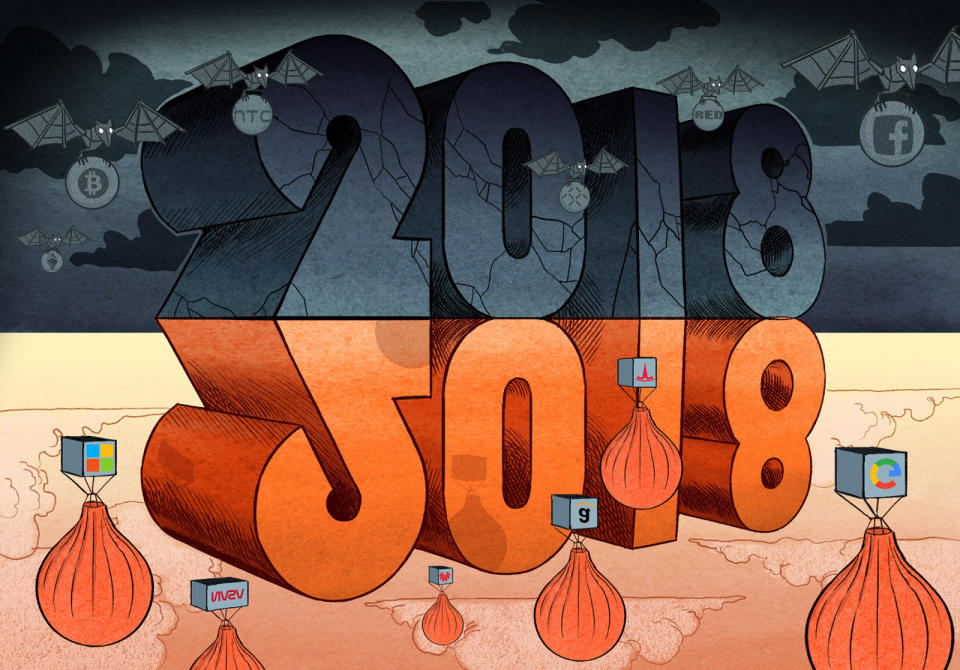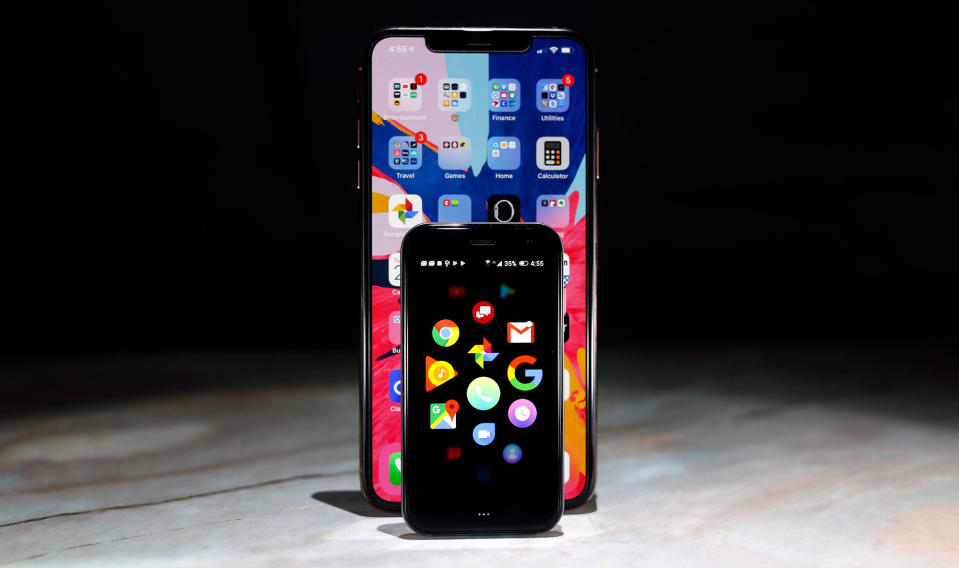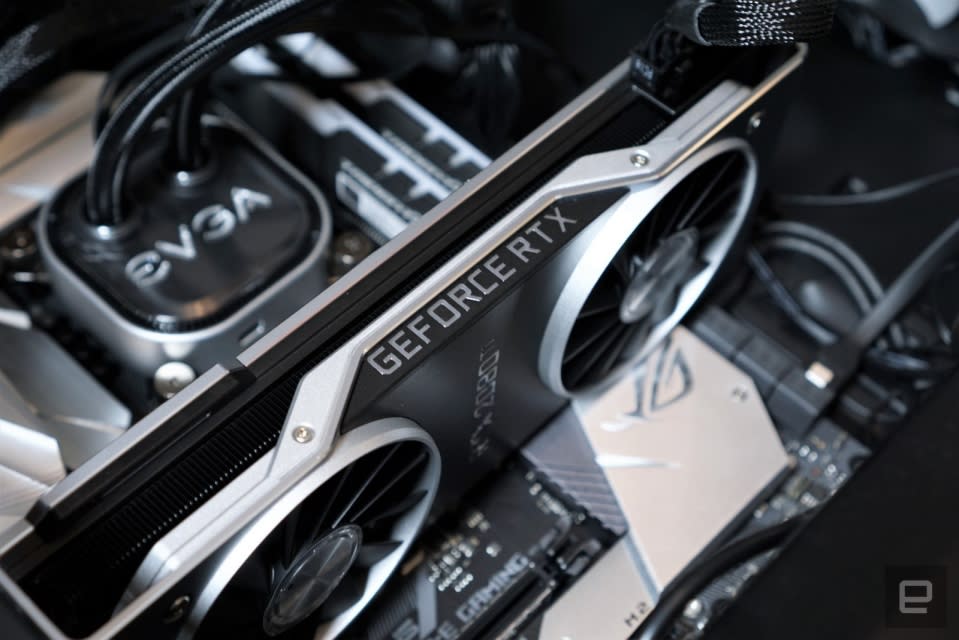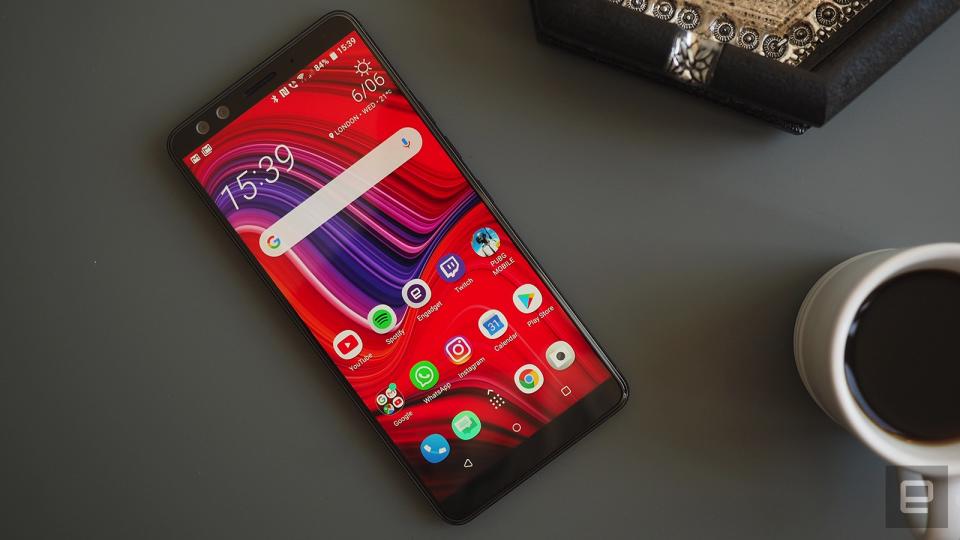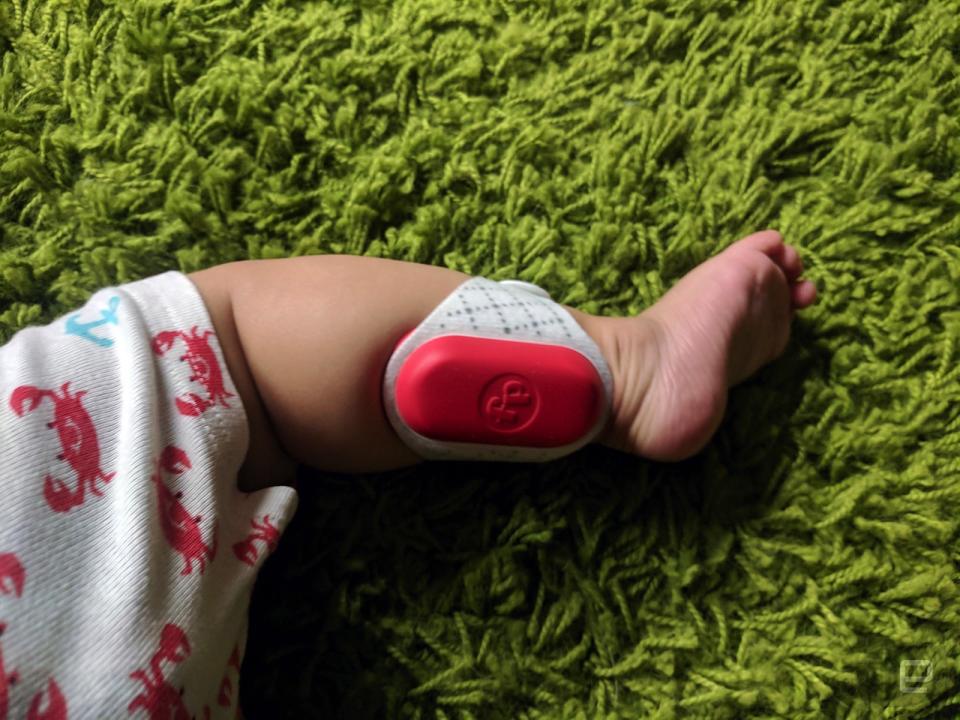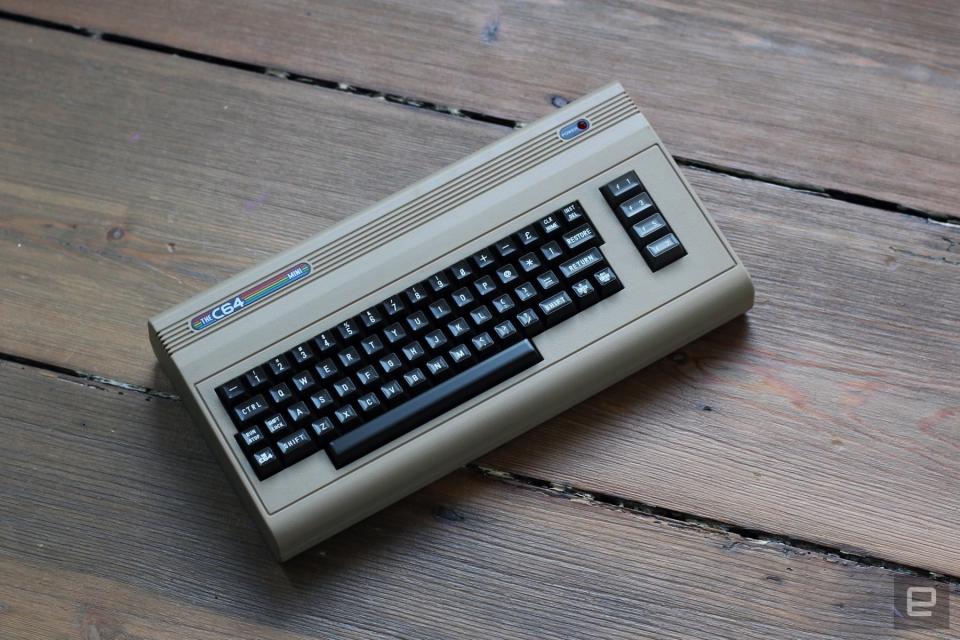The worst gadgets of 2018
Looking back on the biggest flops of the year.
We've had the winners. Now that this dumpster fire of a year is finally coming to a close, it's time to look back on the disasters (real, political and humanitarian) we've survived and heave a sigh of relief. We made it, guys. But not everything came out unscathed at the end of 2018. We saw some real doozies of products this year -- from deeply disappointing chipsets and completely useless phones to a wearable baby monitor that caused eczema outbreaks. Then there are the gadgets that wouldn't have made this list if they hadn't been emblematic of their company's mindblowing inability to read the room. Sigh. Let's take a break from shaking our heads and walk through the garbage alley of 2018's biggest tech fails.
Facebook Portal and Portal+

Edgar Alvarez
Senior Editor
On paper, Facebook's Portal and Portal+ look like they would be worth every penny. They're 10- and 15.6-inch smart displays, respectively, that sport a camera which can follow you around a room as you're talking. The Portal and Portal+ are designed to be the ideal video chat devices for Facebook Messenger users, of which there are more than 1.3 billion every month. And they don't cost that much, either: $199 for the Portal and $349 for the Portal+, which seems like a small price to pay if you want to, say, gift one to your out-of-town parents or significant other. You know, people who you only get to see regularly on video.
The problem with the Portal and Portal+ is the timing of their launch: They arrived in a year when Facebook's been facing major scrutiny over data privacy issues. To make matters worse, the company was seemingly confused about what type of data the Portals were going to be collecting and what it would be used for. When the devices were announced, Facebook execs said no data collected through the hardware, including call logs, would be used for targeted ads on its site. But, later on, Facebook changed its tune.
A company spokesperson admitted to Recode ten days after the launch that, when you make a video call on Portal, it collects data such as the length and frequency of calls -- just as it does on other Messenger-enabled devices. Facebook might use the information to show you targeted ads across its platforms, along with other general usage data.
If it had been any other time, you could say that confusion was a simple mistake by Facebook. But with incidents like a major breach that exposed the private information of 29 million users, it's just hard to look at the Portal as anything but a tone-deaf product.

Palm phone

Chris Velazco
Senior Editor, Mobile
Disconnecting from our phones was a big theme this year. Apple and Google introduced a handful of software tools to illustrate how people spend their time on their smartphones and give them the power to limit their usage. The recently revived Palm looked at the problem and came up with a very different solution. To help people disconnect a bit from their cacophonous online lives, the company built a tiny secondary smartphone for when you want to leave your main device at home.
As concerns over smartphone addiction continue to pick up steam, the Palm seemed like just the right kind of phone at the right time. Sadly, the reality fell well short of the idea's promise. For one, it's a Verizon exclusive and doesn't fully work with iPhones, so only a fraction of the people who might have benefitted from a device like this could actually use it. Its tiny body, while frankly adorable, meant the phone could be difficult to use, and the built-in cameras will make you wish you just brought your regular phone. Ultimately, the Palm wound up feeling like a half-baked solution to a problem that deserves serious consideration.
To be absolutely clear, not everyone agrees with us about the Palm -- some people honestly appreciated that the Palm offered just enough connectivity in a package that made it easy to move on with their days. And beyond that, we still think the idea of a sidekick phone for those days when you just want to live your life is a fascinating and powerful one. The thing is, a device like this only has to do a few things very well, and because the Palm falls short on those fronts, it can't help but feel like a loser.
Snapdragon Wear 3100

Cherlynn Low
Reviews Editor
Let's face it: We haven't had much hope for smartwatches over the past few years. But when Qualcomm and Google first teased a new made-for-wearables chipset at I/O this year, we were all intrigued. It came two years after the chip maker's original flagship Wear 2100 chipset, and was supposed to deliver "no-compromise" smartwatches. The Wear 3100 launched in September, promising battery-extending modes and ambient watch faces that make wearables feel more like real timepieces.
While the more-detailed always-on screen indeed felt more watch-like, the long-lasting battery we were hoping for didn't materialize. Instead of getting days more juice, we got hours extra, which pushed runtime to almost a full day instead of just 15 or so hours. Womp.
Then there's the dedicated sports mode, which is supposed to let you continuously use the GPS, heart rate monitor and other power-intensive sensors for up to 15 hours. But that's not available yet. The first watch to ship with the Wear 3100 ended up feeling like just another Wear OS device, with no significant improvements.
Altogether, it sounds like a lot of hype surrounding a product that ultimately delivered very little. Whether it's a matter of over-promising and under-delivering or simply an industry that got too excited over what ended up being a nothing-burger, this was one of the greatest disappointments of the year.

NVIDIA RTX 2080 TI

Aaron Souppouris
Features Editor
It says a lot that NVIDIA's RTX 2080 Ti was a contender for both Winner and Loser this year. I guess it makes sense: Taken in isolation, the RTX cards are a big improvement on the 10-series that came before them. The RTX 2080 Ti is the fastest consumer graphics card ever, and the new Titan RTX is set to be even faster. Their ray-tracing features, too, are undoubtedly going to play a huge role in gaming graphics moving forward. But raw speed alone doesn't make RTX a Winner.
Instead, RTX is a story of price tags and unfulfilled promise. To the average gamer looking for a new card, it doesn't matter that the RTX offers a generational leap in performance, because the price has increased to match. Broadly speaking, the RTX 2080 is comparable in both price and performance to 2017's GTX 1080 Ti; and the RTX 2080 Ti, while a powerful card, currently sells for around $1,300, which used to be Titan money. Those numbers just don't make sense right now, at least, not with the current state of RTX.
RTX cards have dedicated hardware for both ray-tracing and AI functions like DLSS (deep learning super sampling). But the number of games that support these features can, at the time of writing, be counted with one finger. Early adopters always get the short end of the stick, but with RTX, there's not even enough stick to grab onto.
By no means am I saying that the RTX 2080 Ti is a bad piece of hardware: It's a fantastic graphics card, which we scored highly. If you have the cash and want the best, go for it. But it's been three months since our review, and the issues we raised then -- high price and a lack of support -- still weigh heavily against it. For every month that passes with no new RTX-ready games, NVIDIA is hemorrhaging goodwill. Let's hope it's sorted itself out before AMD launches its RTX competitor next year.
Tablets trying to be laptops

Cherlynn Low
Reviews Editor
Tablets are dead. But that's not stopping companies like Apple, Google and Samsung from still trying to make something happen with them. It seems like the tech titan trio has finally realized that Microsoft got something right with the Surface Pro series, and wants a slice of that delicious pie.
At first glance, it looked like each of them had a promising contender. The iPad Pro packs serious muscle in a premium tablet. But iOS' limited multitasking ability and the poor selection of compatible accessories kept this from being the laptop replacement Apple's marketing promised it would be.
Meanwhile, Google's Pixel Slate offered a versatile OS in its tweaked version of Chrome, but sadly it was buggy software that kept the Slate from succeeding as a 2-in-1. And although Samsung's Galaxy Book 2 was a compelling Surface alternative thanks to its built-in LTE radio, ultimately its ARM-based processor made it unreliable for getting real work done.
The Surface Pro isn't perfect -- Windows still needs work as a mobile-first OS -- but it's as close to a good laptop replacement as tablets can get so far. Perhaps in 2019, we'll see a true Surface rival from Apple or Google with an operating system that makes sense for both productivity and play.

HTC U12+

Jamie Rigg
Reviews Editor
At first glance, there was no obvious reason why HTC's U12+ -- which turned out to be its only flagship of the year -- wouldn't be a good smartphone. The spec sheet's impressive, it's got a big, high-resolution display, a bunch of cameras and there's even an attractive translucent model. While HTC might not be as popular as it once was, surely it's an established enough company that we can trust it to create a handset of fine repute, right?
Well, using the U12+ on a daily basis turned out to be a recipe for disappointment. The phone has pressure-sensitive sides, a trait HTC calls Edge Sense. The features these enable are gimmicky at best and frustrating at worst. No surprise there really, as HTC and other manufacturers have yet to find any compelling use cases for squeezes. The mere action is just uncomfortable on a phone of this size, too.
The biggest issue, however, was that HTC also made the power button and volume rocker pressure-sensitive nubs. They had a mind of their own. If they weren't ignoring your presses, they were responding to phantom ones from inside your pocket. Such a simple decision completely ruined the core user experience, and to an unforgivable degree.
Something that felt inherently broken was the standout feature of the device. And with a $799 starting price, the U12+ was nigh impossible to recommend as a phone anyone should be buying. Not only was the handset a rare flagship bomb, but perhaps worse, a tangible totem of HTC's continuing fall from grace.
RED Hydrogen One

Evan Rodgers
Engagement Editor
One might expect RED, the company behind groundbreaking cinema cameras like the Epic, to deliver a decent smartphone with exceptional imaging. Instead the company's much-hyped Hydrogen One arrived late to the market with a processor from 2017, loads of bloatware, a sub-par screen and, worst of all, a mediocre camera.
The Hydrogen One's stand-out feature is a camera array in the front and back that can capture 3D photos and videos. Problem is, you can only view them on a Hydrogen One's 3D display, which also isn't great. All of this would have been interesting in 2011, and it was: HTC's Evo 3D produced novel 3D pictures that you could look at on its autostereoscopic display. But today smartphone cameras produce incredible 2D pictures, and the stretch goal is a decent portrait mode. Isn't that ambitious enough?

Fisher-Price Sproutling

Terrence O'Brien
Managing Editor
Pro-tip for new or expecting parents: smart baby gadgets rarely are "smart." Most are expensive and don't offer any advantages over their traditional counterparts. But, ultimately, they're pretty harmless. A few however, are actual nightmares. Case in point: Fisher-Price's Sproutling. It's a $250 wearable baby monitor that does so little, you'll still need to buy a separate, proper baby monitor. Its app is buggy and its alerts are basically useless. It does have a really nice selection of ambient noises and lullabies, though. That's gotta count for something, right?
The worst part, though, is that the band caused my son to have constant, severe eczema outbreaks. Washing it frequently, swapping legs every night... nothing helped.
No surprise then, that the Sproutling received Engadget's lowest review score ever -- 41. And, not to brag, but we're pretty sure it's one of the things that led Fisher-Price to not just discontinue the device, but also erase every trace of its existence from the internet.
Retro consoles done wrong

Kris Naudus
Senior Editor
The NES Classic was a must-have item back in 2016, and last year the SNES Classic refined the concept to critical acclaim. With nostalgia-hungry hordes of gamers eager to see childhood favorites repackaged into adorably tiny, high definition-friendly packages, mini versions of other systems should have been a home run. Emphasis on "should."
Instead, we got a bunch of also-ran disappointments, because not every company has Nintendo's level of detail and massive back catalog of quality games. We don't know how many people were all that eager for another revival of the Commodore 64 but Retro Games still gave it a shot, releasing the C64 Mini with very few of the titles that made people love the system in the first place. Even if you put in the time and effort to side load some of your actual favorites, the system's software was a mess and the stiff, unresponsive joystick was bound to leave you screaming in frustration.
Far more heartbreaking, however, was the recently released PlayStation Classic. With Sony itself taking the reins, this looked like an easy win. But the games selection included a lot of also-rans instead of the classics we loved, while others were available only in their PAL versions, largely unsuited for NTSC sets. Those disappointments place this one firmly in the loser column.
Sega also has its own retro Genesis/Mega Drive system in the works, but it's been delayed until next year and we don't even have an inkling of the games list yet. We can only hope that when it finally does come out, it'll be better than the plug-and-play consoles that companies like AtGames used to litter discount stores with.

OlloClip Pro

Evan Rodgers
Engagement Editor
OlloClip was one of the first companies to make add-on lenses for the iPhone. The problem was, they weren't very good. Fast-forward to several years later and, unfortunately, not much has changed. If you thought OlloClip's new Pro lenses would buck the company's history of optical mediocrity, you'd be wrong.
Not only is the clip that you attach the lenses to the phone with cheap and creaky, the lenses themselves have flares and light leaks all over. They're difficult to align perfectly, will fall off easily, and even when you do have them mounted just right, they have high levels of distortion and vignetting.
All this being said, there are great smartphone lenses on the market. Moment's assortment of lenses aren't as universal, but they lock securely into the company's cases and have none of the leaks or vignetting of OlloClip's offerings. And if you're looking for a serious filmmaking apparatus, Beastgrip's phone cage will let you mount any 37mm lens.
Kanye West's "iPlane" for Trump

Edgar Alvarez
Senior Editor
It's no secret that Kanye West is a master troll. He knows just what to say to get people talking about him, and there's no better example of this than when he showed up to the White House with a sketch of the "iPlane 1." West's thought was that Apple should build this spaceship-looking aircraft to replace the Air Force One as Trump's official cloud rider, which he suggested would be powered by hydrogen. As it turns out, though, the "iPlane 1" idea wasn't even West's to begin with. The futuristic concept was created by industrial designer Shabtai Hirshberg, who came up with it for his transportation thesis at the College for Creative Studies in Detroit.
So not only did Kanye not come up with the "iPlane 1" himself, but on that same day he also let the whole world know his iPhone passcode is "000000." Talk about a tech fail. It's a good thing West has since said he's staying out of politics for the foreseeable future.
